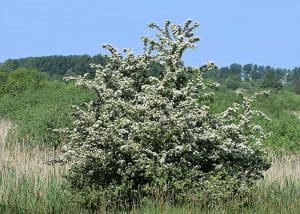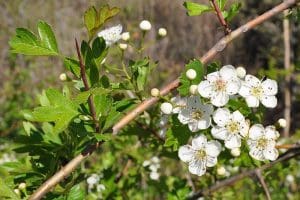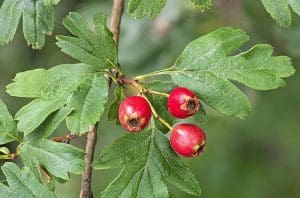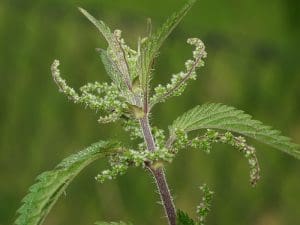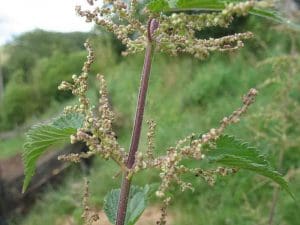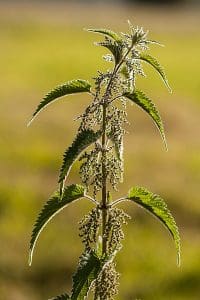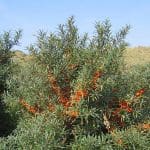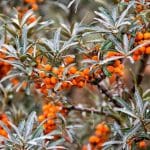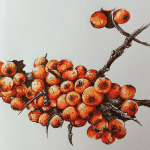Through this piece we’ll be taking a deep dive into the Health benefits of Foraging. The recent increase in the popularity of alternative medicine and herbalism as an alternative to pharmaceutical medicine reflects the appreciation that wild plants can have excellent medicinal properties. As a forager however, I’m not qualified to recommend any plants as a medicine.
You should always consult a qualified herbalist for advice on the use of plants for any medical condition. But Hippocrates, the Father of Modern Medicine, put it nicely when he said:

Let food be your medicine and let medicine be your food.
I take that to mean that by eating healthy food on a regular basis you are keeping your body in the best condition to fight off illness and infirmity. Or in other words, prevention is better than cure.
Back in the day, when we were hunter-gatherers, we would have eaten a huge variety of different plants as we followed the changing abundance of herbs, seafood, mushrooms and berries through different habitats with the turning of the seasons. Since the agrarian revolution, our ever-increasing dependence on farmed foods and, more recently, our busy lifestyles and ease of access to pre-packaged food, has led to our dependence on a greatly reduced variety of foods. We are seeing increases in chronic conditions like obesity and type II diabetes. These health conditions have been linked to reduced diversity of microbiota in our gut microbiome. Research has shown that people with a higher diversity of microbiota in their gut microbiome live longer and experience a better quality of life, in terms of their health.
The best way to increase the diversity of our gut microbiota is to increase the diversity of the food we eat. Of course we could increase that diversity by being more imaginative with our shopping list and more creative with the food we prepare, but why not increase that variety by adding some wild foods to your diet? Wild foods have a naturally high concentration of plant chemicals built into their structure – that is what enables them to survive pests and diseases and compete with other species. Those plant chemicals are what we call vitamins, minerals, proteins, fatty acids, and so on. There are so many wild plants with amazing health benefits but here are five to consider.
The Health Benefits of Foraging these Five Wild Species
Hawthorn, Crataegus monogyna
A small tree, often managed as a hedge, which blossoms in May, adorning field margins and roadsides with masses of white (occasionally pink), five-petalled flowers.
The whole tree contains flavonoid antioxidants that are extremely beneficial to the heart and blood circulatory system, protecting the blood vessels and arteries, moderating blood pressure – whether it be too high or too low, and lowering cholesterol.
Young leaves can be added to a salad – they don’t add much flavour but are worth adding just for their health benefits. Or you can flash fry the young leaves and sprinkle them with salt for a tasty snack. Fresh flowers can be added to salads as well, giving a mild almond flavour. That almond flavour can also be infused into water for a tea, or to make syrup by adding sugar to the infusion and simmering to reduce it to the desired thickness. Don’t worry too much about the association between almond flavours and cyanide – you’d have to eat a whole tree’s worth of flowers before it would affect you. So, please don’t eat a whole tree’s worth of flowers!
In September the berries (haws), with their apple-like flavour, are good for chutneys, ketchup, fruit leather or for adding to jams to help them to set, due to their high concentration of pectin. Haws are high in Vitamin C and several B vitamins.
The leaves, the buds, the flowers and the haws are all good, so combined together have excellent health benefits. For example, add leaves, flowers and buds to a bottle of gin in the Spring, with some sugar. In the Autumn add some haws to the mix. By the following spring, you’ll have a tasty tonic for the heart. Or try this delicious Hawthorn Bakewell Tart
Click here to see our Full Hawthorn Foraging Guide
Nettles, Urtica Dioica
A concentrated source of vitamins A, B, C, and K, all the major minerals, fatty acids, and all the amino acids we need; Nettles are one of the most nutritious plants on the planet. They have two growth spurts – one in Spring and one in Autumn and these are the best times to harvest nettles for culinary purposes. The leaves can be cooked and used like spinach, as a vegetable in their own right or in soups, casseroles or quiches, or use nettles to make a healthy pasta or bread to enjoy with nettle pesto, washed down with nettle cordial, wine or beer.
As they come into flower, nettles accumulate crystals of calcium carbonate in their leaves which gives them an unpleasant gritty texture and can cause pain in the kidneys.
In their Latin name, Urtica Dioica, the Dioica part means two houses. This refers to the fact that there are male and female plants and they are often segregated into blocks of male or female stands. The male and female flowers are difficult to tell apart without a hand lens, but it is easy to recognise the female plants when they come into seed.
The seeds weigh the flowers down, so they hang in drupes from the leaf axils. Seeds are high in protein and stimulating. A drink made with nettle seeds is like drinking a triple expresso coffee and the histamine and choline help to boost your mood. It’s best to use the seeds to make a smoothie as, if you try to make a tea the seeds just float on the surface. The flowers and seeds do have hairs so they can sting you a bit but blending them should take care of that. However, it’s recommended you don’t have more than 25g of nettle seeds in a day or you won’t be able to sleep!
Click here to see our Full Nettle Foraging Guide
Learn more about the medicinal uses of nettle seeds here
Dandelion, Taraxicum officinalis
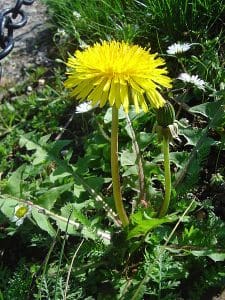
Rich in Vitamins A, B, C and K, antioxidants, and minerals including potassium, iron, calcium, magnesium, zinc, phosphorus, and beta-carotene. The Taraxacum part of their Latin name refers to their anti-inflammatory properties. Taraxacum officinalis further endorses this property as ‘officinalis’ indicates that they were kept in the Officine of monasteries, where all the best foods and medicines were stored.
Dandelions are widely known for their diuretic properties – hence, for example, the French name for the flower, Pissenlit (wet the bed!). As a mild diuretic, they support kidney function in filtering out toxins and reducing water retention, while replacing minerals lost through the expulsion of fluids such as potassium and other electrolytes. Potassium is important in maintaining the balance of fluids in the body as well as maintaining the correct functioning of the heart.
The roots and leaves can be used to make tea and beer. The roots can also be toasted to make a mild coffee substitute. Leaves can be eaten raw in salads or wilted to go with cooked root vegetables or stews and casseroles. Unopened flower buds can be made into capers. Dandelion flowers have a soft honey flavour to counterbalance the slight bitterness of the leaves or to make into vegan honey. The milky latex in the hollow stem can be used topically on skin conditions such as warts.
Click here to see our full Dandelion Foraging Guide
Seaweeds
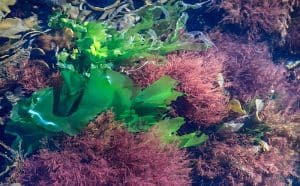
Seaweeds are the most highly mineralised vegetables on earth, accumulating and concentrating minerals directly from the sea; they contain high levels of vitamins, particularly A and C, and have an excellent protein and amino acid profile. Their high iodine content makes them beneficial to the thyroid gland and they are high in soluble fibre which is good for digestion. Most seaweeds have the ability to satiate the appetite, so act as an excellent diet food. One exception to this is the kelps which have the opposite effect. Kelps contain glutamic acids, from which monosodium glutamate (MSG) is derived. MSG has appetite-enhancing properties, so they make you feel hungry even after you have eaten.
Different seaweeds are found in different coastal regions and different zones of the tidal reach. It is well worth visiting your local stretch of coast to see which seaweeds are to be found as they all have tremendous health benefits. Please see my blog on Foraging for Seaweed for an overview and visit our Foraging Seaweeds Guide to access identification guides for different seaweed species.
Sea Buckthorn, Hippophae rhamnoides
The medicinal and nutritional benefits of Sea Buckthorn are referred to in an eighteenth-century Tibetan medical text. The author of the text, Sibu Yidian, devotes thirty chapters to this plant regarding its health benefits and its value in balancing Yin and Yang energies.
The vitamin C content of Sea Buckthorn can be up to ten times higher than other citrus fruits. It also contains minerals including magnesium, iron, potassium, and calcium as well as vitamins A, E, and B-complex vitamins, including vitamin B12; an important nutrient for people who have removed meat from their diet. With a fat content of 7% and lots of healthy fat-soluble vitamins, the fruit allows your body to process the nutrients directly.
Sea Buckthorn also contains quercetin, which is a powerful anti-inflammatory flavonoid. It’s high antioxidant content and intense pigmentation makes Sea Buckthorn valuable in convalescence. Capsules containing Sea Buckthorn juice are often given for skin issues and low energy. The seeds, flowers, bark, and leaves are used in decoctions to aid many ailments from treating acne and bedsores, to blood pressure.
The berries can be made into jams or jellies for serving with savoury dishes or cheese, or can be made into juice, caramel or sorbet.
Sea Buckthorn Caramel
240g Sea Buckthorn berries
240g Caster sugar
350ml water
Bring the berries and sugar to the boil until they form a light caramel Add the water, boil again, then mix in a blender and pass through a fine sieve.
Sea Buckthorn Sorbet
1 litre Sea Buckthorn berry juice
800g caster sugar
2 vanilla pods, seeds only
100g glucose, warmed
4 leaf gelatine (soaked and metled with a drop of Sea Buckthorn berry juice
Mix all ingredients together until dissolved then pass through a fine sieve. Churn in an ice cream machine.
In Conclusion on The Health Benefits of Foraging
In addition to providing unusual, tasty and colourful additions to your meals, and an abundance of nutritious ingredients, there is great satisfaction in eating something you found while out enjoying the fresh air and local scenery, whether that be a park, a beach, a woodland, meadow or hedgerow. There are so many edible wild plants to choose from. The more we make use of them, the more we appreciate them and recognise their importance in nature as well as their nutritional benefits. Its a great way to reconnect to and remember our own place in the natural world.
Happy Foraging!



